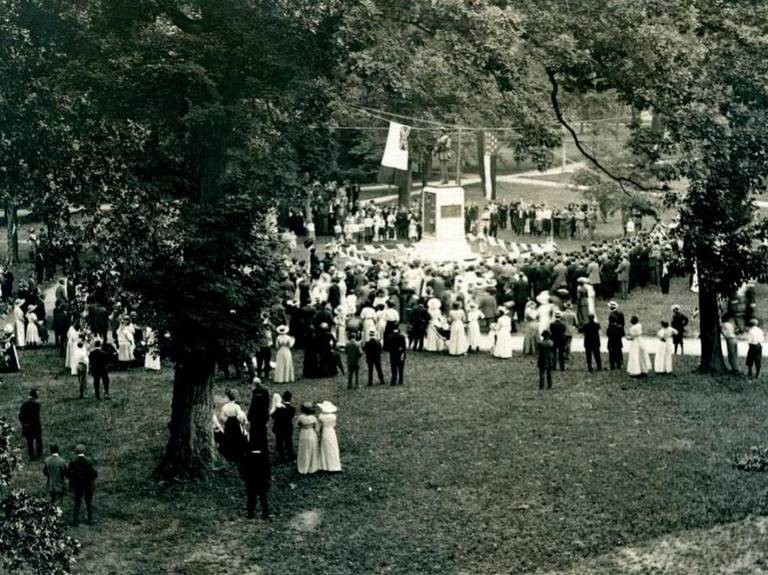Related Posts
Why historical context is critical
I am reading Freedom Struggles: African Americans and World War I (Harvard University Press, 2009), by historian Adriane Lentz-Smith, PhD, associate professor of history at Duke University. Dr. Lentz-Smith is an alumna of Yale University who completed a postdoctoral fellowship at UNC-Chapel Hill. I found this book because the author was recommended as a contributor to a symposium we are planning for next spring on the 100th anniversary of the 1918 influenza pandemic. There still are many lessons to be learned about what happened, and how to prevent it from ever happening again. Since the pandemic occurred in the context of World War I, we will examine how that war affected the spread of the pandemic. Because we care about vulnerable populations, we also will look at how African Americans fared in the war and when struck by influenza. Lentz-Smith focuses on African Americans, including those who were soldiers, in the decades before and around the time of World War I.
 The story she tells in Freedom Struggles is deeply troubling, and I woke in the early morning disturbed by it, bothered that I knew so little about details of the era and ashamed that it had happened in this country.
The story she tells in Freedom Struggles is deeply troubling, and I woke in the early morning disturbed by it, bothered that I knew so little about details of the era and ashamed that it had happened in this country.
Although my inquiry started with pandemic flu in 1918, it connects right back to Silent Sam, the Confederate memorial statue on the UNC-Chapel Hill campus. While I had not expected to write so soon about Silent Sam, I find myself, once again, compelled to do so.
The book focuses on the post-Reconstruction period in the United States, with many references to people in North Carolina and other parts of the South. That period cannot be understood without recognizing how the powerful nature of Jim Crow enforced separate and unequal treatment in most parts of this country. It was a cruel, self-perpetuating, degrading, sometimes murderous system. While slavery had ended, and African Americans were supposedly free, a culture in America had grown up that enforced second-class citizenship, denied equal rights, crushed dreams and sometimes killed to sustain a system that should have ended with the Civil War – and never should have existed at all. Lentz-Smith wrote:
White supremacy, the system of social control and political order that undergirded segregation, came to govern African Americans’ lives in the decades after the Civil War. From the 1890s on, it hardened from custom in most parts of the United States to law in most parts of the former Confederacy. Jim Crow, as folks popularly called it, made a ritual out of asserting the unequal citizenship of people of color and a virtue out of the exploitative behavior of white Americans.
That’s why Silent Sam is out of place

The Confederate monument on the UNC-Chapel Hill campus, nicknamed “Silent Sam,” was unveiled in a ceremony on June 2, 1913. (Photo courtesy of the North Carolina Postcards Collection, North Carolina Collection, Wilson Library, University of North Carolina at Chapel Hill, as published in the Durham Herald-Sun.)
We cannot erase Jim Crow. It happened. It never should have, but it did. We should teach about it, because it is part of our history, albeit a despicable, shameful part of history. We should not venerate it or celebrate it. The Silent Sam statue, which was erected in 1913, came squarely within the Jim Crow era. In an article in the Durham Herald-Sun recently, its history was recounted:
And on June 2, 1913, Silent Sam was dedicated on commencement day with speeches from then Gov. Locke Craig and Confederate Civil War veteran Julian Carr.
Carr praised the Confederate Army as the saviors ‘of the Anglo Saxon race in the South’ and recalled ‘horse-whipp[ing] a negro wench until her skirts hung in shreds’ for offending a Caucasian woman on Franklin Street.
Read more here.
With no disrespect to any of the people who want the statue to remain where it is, I urge the legislature and the appropriate commission to permit University officials who require that permission to move the statue from one of the campus’s most beautiful and popular public spaces. Let it be placed in another, more considered location, where it can be intentionally visited and studied. Let us get on with the work of learning without creating further divisive distraction and dissension among us. We are educating students for the 21st century in an environment that must be welcoming and inclusive for all. That is the kind of campus we must be.
Barbara
The views expressed in this blog are Barbara Rimer’s alone and do not represent the views and policies of The University of North Carolina or the Gillings School of Global Public Health.
